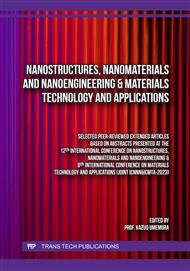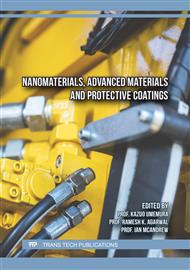p.41
p.49
p.55
p.63
p.69
p.75
p.83
p.89
p.95
Influence of Duty Cycle on the Phosphorus Content and Hardness of the Ni-P Coatings Produced by Pulse-Current Electroplating
Abstract:
Ni-P coatings were prepared on low carbon steel substrates using the pulse electrodeposition method. The influence of the pulse duty cycle on the phosphorus content and hardness of the Ni-P coatings was investigated. Scanning electron microscopy (SEM) and energy dispersive X-ray spectroscopy (EDS) were employed to examine the surface morphology and chemical composition of the Ni-P coating layers. The results showed that an increased pulse duty cycle (20% - 80%) led to a decreased phosphorus content from 17.81 wt.% to 13.71 wt.%. The microhardness values were found to have an inverse relationship with the phosphorus content. The highest hardness of 538.22 ± 12.92 HV0.1 was obtained from the sample produced with a duty cycle of 80%, which had the lowest P content of 13.71 wt.%.
Info:
Periodical:
Pages:
69-73
Citation:
Online since:
March 2024
Keywords:
Price:
Сopyright:
© 2024 Trans Tech Publications Ltd. All Rights Reserved
Share:
Citation:



